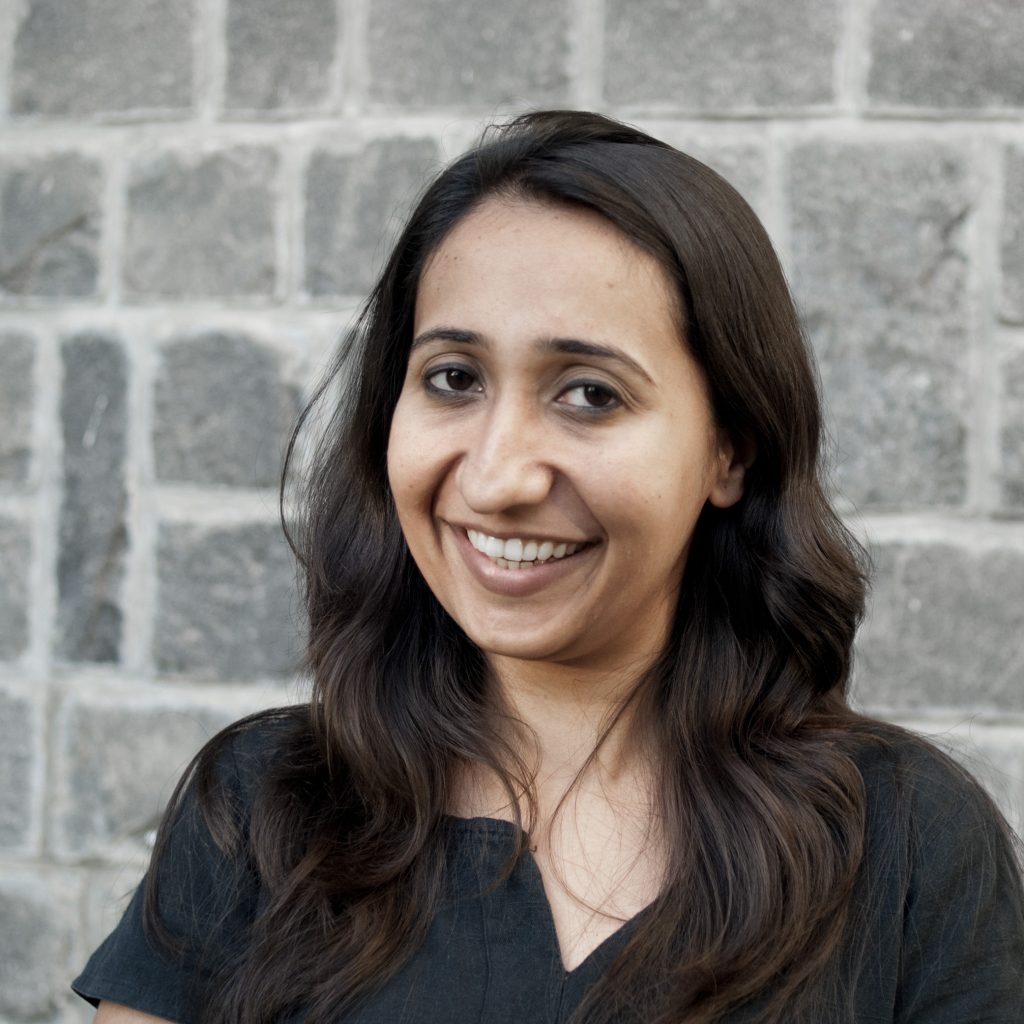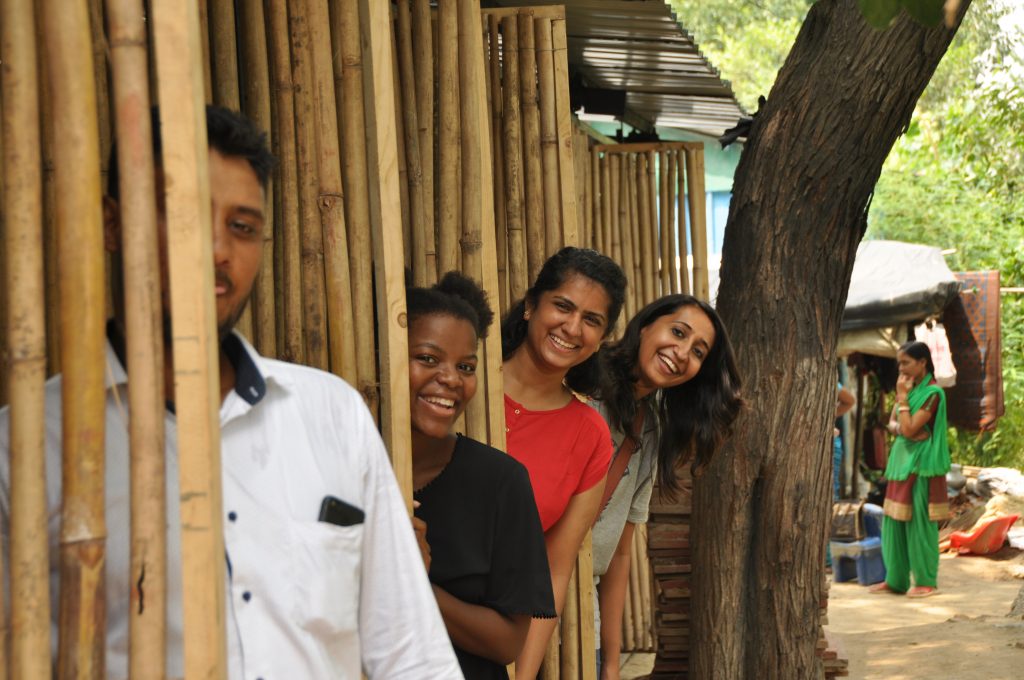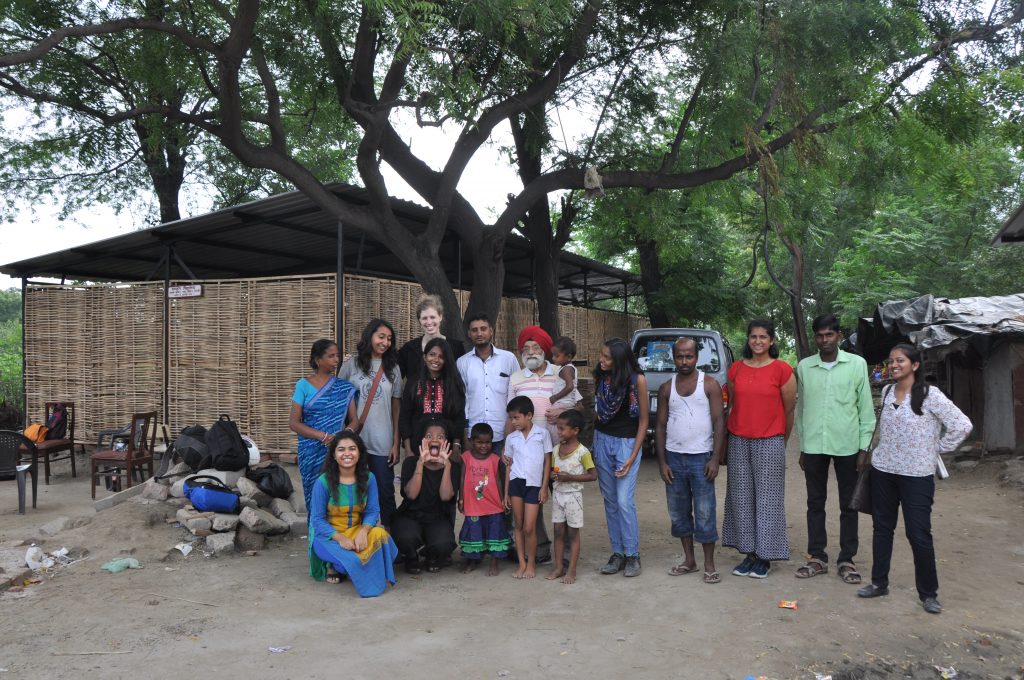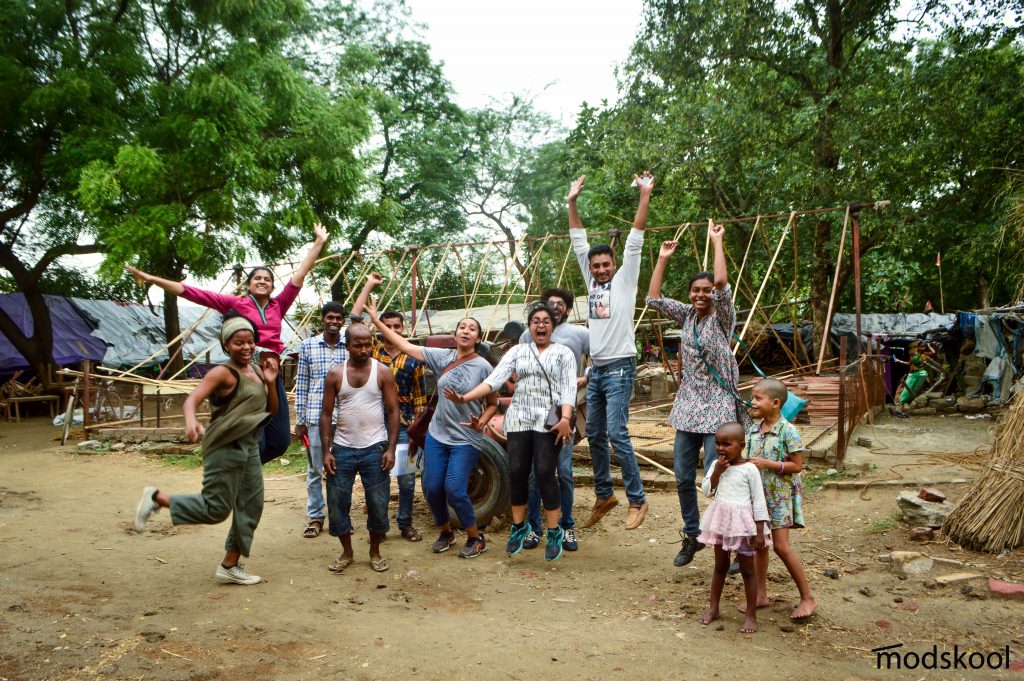When she was a teenager, Swati Janu survived every Indian kid’s biggest nightmare – failing a grade. Unsure of her future, Swati found herself contemplating her options and decided to ignore societal pressures to pursue her passion. Today, Swati is a successful architect with many innovative projects under her belt, including the now famous ‘Modskool’. We were lucky enough to get a chance to chat with her and hear all about her amazing journey.
A Learning Experience
Few children truly love school, given our current education system, and though Swati was a good student, she found herself losing motivation while studying subjects she had no interest in. She explains, “I have always been a good student and now I think it was because I was expected to be. My parents have worked very hard to secure a comfortable life for us, having migrated from their villages in Rajasthan as children to the cities of Jaipur and Delhi for better jobs and to pursue their dreams. And for my education, they would be like ‘our kids will do better than us’. So, it was very important to them that I study hard and do well.”
Living and studying in Chennai, a highly competitive environment, Swati felt the strain while giving her 10th standard exams. The pressure became even more difficult to handle when she won a scholarship to go study in Singapore for her 11th and 12th standard.
Away from home, depressed, and confronted with an entirely new educational system, Swati was miserable. She says, “I started failing my subjects, and then I became quite depressed – I was 16 and I didn’t know what was happening to my body and all the other changes around me! I couldn’t understand those things that perhaps every adolescent goes through. So, from doing very well in school – from the first rank – I went to the last rank in the class.”
She continues, “I was quite depressed during those days and my parents were very concerned for me. And the one thing I was good at was English. English as in Creative Writing because you don’t have to study for that! Maths, Physics, Chemistry and Biology – I was not that interested in. I had come from the system of mugging up by-rote memory. And even though I was seen as ‘a good student’, I realized later how that was more due to a rote learning than applied thinking.”
Choosing The Path Less Trodden

Eventually, she had to forego her scholarship and returned to Chennai to resume her studies. It was an uncertain time for her, and Swati says, “After that, it was for the first time that I started thinking for myself, and about what I wanted to do with my life. Being depressed was the best thing that could have happened to me in that period because until then I was doing just what I was expected to do. I think depression is our body and mind’s way of telling us that this is not who we want to be and that we need to do something about it.”
After giving the IIT entrance exams despite not wanting to be an Engineer, Swati found herself more interested in art and creative pursuits.This led to her choosing Architecture as a career path and accepting a place at the School of Planning and Architecture, Delhi. She later went on to study at the University of Oxford on a scholarship for her Masters. The good student had come full circle!
Swati’s experiences have ensured that she is uniquely qualified for another one of her roles – teacher. She says, “After 10 years since graduation, I just started teaching this semester and I feel that by sharing my experiences of finding my own path in life, and the confusion we go through in our teens and youth, I am able to guide and perhaps help other young students as well.”
The Business Of Building Dreams

When she graduated, Swati began working with a French Architect to design a variety of projects. However, she quickly became disillusioned with the work that she was doing, “Over time, I just began to realize that my architectural knowledge and services are something that most of the people in my country don’t have access to, and it stopped being relevant in terms of who I was designing for.”
She began to be fascinated with smaller, more impactful projects and joined the social enterprise mHS CITY LAB. Swati explains,“What we do at MHS is we help people design and also facilitate construction in low-income communities or what we call informal settlements. While most people might think that these bastis might be made up of tarpaulin and bamboo, most are actually built of brick and concrete.”
She says, “If you go to a slum or JJ cluster in Delhi or the Mumbai chawls, you will find that they use affordable materials in such innovative ways but structural safety is a big problem. If there were to be an earthquake in Delhi, most of it would be flattened because of the way it has been built, and that is why we need more architects and engineers working in informally built neighbourhoods.”
The Birth Of ModSkool
Technically speaking, ModSkool refers to the designs for an affordable, modular school that can be built in the space of a few hours, and moved just as quickly. It can accommodate 250 students and serves the purpose of providing options for those who are landless and often asked to move for the sake of government demolitions or other issues in the area.
The first ModSkool can be found in the Chilla Khadar Slum. When the original school was demolished, along with the housing in the area, the residents who had lived there for years were uncertain about what to do. A social worker, Abdul Shakeel, filed a PIL, which convinced the court to temporarily allow a school to be reconstructed.
Shakeel approached Swati and her colleague Nidhi Sohane, a Community Architect, for ideas. They knew they had an interesting challenge ahead of them. Working with the feedback of the community, they were able to design a school that met the requirements of those in the area.
Getting Down To Work

When it came to actually rebuilding the school, Naresh Pal, a young local community leader stepped in. Swati says, “He is a community leader in terms of mobilising everyone and he is the one who is a driving force behind the whole project for us.” The designs continued to evolve as they constructed the school, and designs were made in real time since both architects were also part of the construction team.
Swati says, “You know, typically architects sit in office and design, and when you go to site you tell the contractor what to do but for us, it was important to blur these boundaries between the designer, labour and those we are designing for. Our design also kept evolving in terms of materials commonly used by the people living in the community.”
As for funding, Swati explained, “We thought that maybe they could raise money on their own, but after a year passed, we realized that we need to do something about it. So, we kept 2.5 lakhs as the budget so that we could put something on Facebook. We knew that we had enough friends and family who would be able to come forward and support it, and that’s what happened.”
Another important member of the team, Mr. Vinod Jain, became central to the rebuilding because of his generosity, lending both his time and money to the project. Swati says, “The biggest contribution was from Mr. Jain, who designed the structure for the project. After we managed to collect only a lakh or so from friends, we met Mr. Jain for engineering advice – to see if the structure was strong and if there was anything else we could do – he said ‘Swati, don’t worry, whatever is left, I will fund it, you just go ahead and build the school’. And that’s exactly what we did!”
A Community Effort

Initially, only Swati, Nidhi and Naresh were working on the actual construction, but soon word spread and the team grew to encompass 60 people. She admits that it was overwhelming, and says, “I didn’t expect it to grow like this. You know you never do, and that’s how it’s been working in my life. I never ever know what I’m going to do next! It just keeps happening step by step.”
The design itself – one of the most special aspects of the project – is remarkable. Designed to be built by and for the community, it is versatile and can be used in any weather – a boon for more extreme climates like Delhi. It aims to keep the kids warm in winter, as well as protect them from the heat of summer. It also tries to protect them from another source of worry – mosquitos. But most importantly, the team has tried to conceptualise a space where learning is not only possible, but a fun and stress-free experience.
While Swati and her team are aware of the impermanence of the solution, they are also providing something important to these disenfranchised communities – the tools to rebuild. They hope that while they construct structures, they will be changing attitudes and lives.
We at KYS wish them nothing but luck in the pursuit of their goal, and we can’t wait to see what this small band of innovators comes up with next!
Liked reading this? Then you might also like to read Swathi Mahesh Keerthipati – How Feeding The Homeless Became Food For Her Soul.
If there’s any story that needs to be told, we will tell it. Write to us at contact@knowyourstar.com with your story lead, or contact us on Facebook or Twitter.